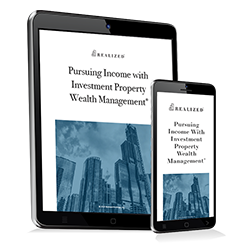
Saving your entire career to ensure you have a comfortable nest egg in retirement is all for naught if you spend those funds too quickly.
Determining how much money you can safely withdraw from your retirement portfolio each year is more art than science since you really can’t determine how long you’ll need that money to last. Life expectancy aside, there are several other key factors that could impact the strength of your retirement portfolio, as well as your overall liquidity.
Still, there are some formulas you can use to determine a “safe” amount to withdraw each year to potentially maximize your ability to stretch your retirement funds until you pass. In this article we’ll take a look at the Safe Withdrawal Rate, a common metric used to determine an annual withdrawal rate that can help you extend your retirement funds as far as possible.
What Is the Safe Withdrawal Rate?
According to a 2019 report by Washington, D.C.-based nonprofit Employee Benefit Research Institute, roughly 40 percent of U.S. households that have a head-of-household between the ages of 35 and 64 expect to run out of money in their retirement years. Another similar report found that half of Americans over the age of 65 who live alone lack the financial resources to meet their daily living expenses.¹ Meanwhile, according to the AARP, only one-third of American households are confident they can retire comfortably without running out of money.²
Employing the Safe Withdrawal Rule can help you become part of that one-third minority. Here’s how it works:
Safe Annual Withdrawal Rate = the annual amount you withdraw from your retirement portfolio divided by the total amount you have saved.
You are shooting for a number around 4 percent to increase your chances of maximizing the life of your retirement funds. If you have a $1 million retirement portfolio, and you expect to spend $30,000 each year to maintain your standard of living, then your annual Safe Withdrawal Rate is 3 percent $30,000/$1,000,000). However, if you expect to need $50,000 per year to cover all your obligations and spending, your annual Safe Withdrawal Rate is 5 percent ($50,000/$1,000,000).
In the latter example, you would need to grow your retirement funds by an additional $250,000 in order to lower the annual spending percentage to 4 percent ($50,000/.040%=$1,250,000). The more you can lower your annual withdrawal rate, the longer you can make your retirement funds last.
It’s important to note that the Safe Withdrawal Method comes with some limitations. Foremost among them is the fact that your retirement portfolio could shrink in adverse market and economic conditions, leaving you with less money and little time to get it back. It also doesn’t take into account the need to pay for unexpected large expenses, such as medical bills, managed care in your Golden Years, major repairs to your home, a granddaughter’s wedding, or any number of large expenditures that could skew that 4 percent “safe” withdrawal rate.
This method also assumes that you’ll be left with no money when you die, which isn’t appealing to retirees and seniors who want to leave a financial legacy to their children and grandchildren. Lastly, it doesn’t factor in your Social Security payments, a guaranteed income stream that can help preserve portfolio capital.
The Bottom Line
High inflation and bull market conditions will adversely affect the 4 percent rule. That number may not be feasible for many seniors, especially those heavily invested in equities markets. Figuring out ways to lower your annual safe withdrawal rate – even if it's just a few tenths of a percentage point – can make a big difference over time. However, it also might mean making some adjustments to your standard of living.
If you have any questions about how long your funds will last based on the current strength of your retirement portfolio, consider having a discussion with your financial planner or another qualified financial professional. They’ll dig deep into your finances and spending needs and can help implement a plan to potentially preserve your retirement capital.
Sources:
1. Running Out of Money in Retirement: What’s the Risk?, Annuity.org, https://www.annuity.org/running-out-of-money-in-retirement/
2. Almost Half Of Americans Fear Running Out of Money in Retirement, AARP, https://www.aarp.org/retirement/planning-for-retirement/info-2019/retirees-fear-losing-money.html



